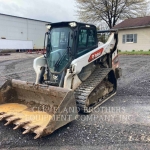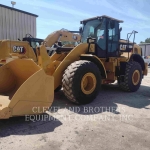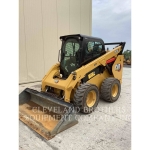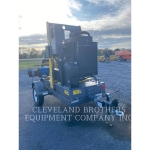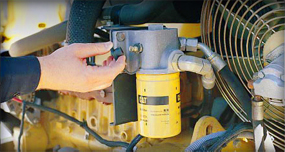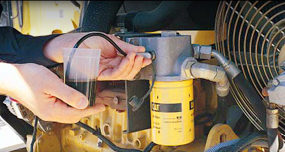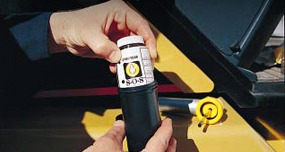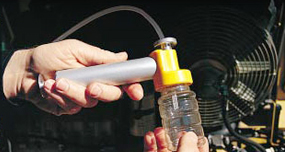How to Take an Oil Sample Using an Oil Valve Probe
How To Take A Good Oil Sample
Developed by Caterpillar, our S·O·S program helps you detect problems before they lead to costly repairs and downtime. We recommend sampling fluid compartments every 250 hours and at each oil change. We recommend sampling on-highway truck engines every 15,000 miles (25,000 km) and at each oil change.
Using oil valve probe
This sampling method requires a Brass Probe (8T9208) and approximately 15 cm (6 in) of tubing. If you are sampling several compartments, begin with the cleaner systems—usually the hydraulic system, then the transmission or steering system, and finally the engine system. Use a new piece of tubing for each machine or engine. It is especially important to discard the tubing after sampling engine oil because soot and oil additives may remain in the tubing and contaminate other samples.
STEP A
Set the engine at low idle and remove the dust cap from the valve of the compartment you are sampling.
STEP B
Insert the probe into the valve and collect about 100 ml (4 fl oz) of oil into a waste container. If the oil flow is slow at low idle, it may be necessary to have someone accelerate the engine to high idle while extracting the sample. Dispose of the waste oil properly. (This process cleans the valve and helps ensure a representative sample.)
STEP C
Insert the probe into the valve again and fill the sample bottle three-quarters full—do not fill to the top. Do not allow any dirt to enter the bottle or bottle cap.
STEP D
Withdraw the probe from the valve and secure the bottle cap. Then place the bottle with the completed label into the shipping cylinder.
Avoiding Contamination
To avoid contamination, do not take samples from the drain stream, a waste oil container, or a used filter.
Ensuring accurate S•O•S results
Fill out sample label completely! To ensure accurate sample results, supply all of the information requested for each machine compartment. Model, serial number, and service meter units on both equipment and oil are very important. If necessary, you can obtain oil type and classification information and the meter reading of your last oil change from shop records. It is also critical to indicate whether or not you changed the oil when you took the sample. New oil samples are necessary for oil condition analysis. When you receive a new brand or shipment of bulk oil, submit a sample and indicate on the label the brand, type, and classification of the oil. Fill out the sample label information before you begin taking samples to keep the label oil-free and easy to read.

